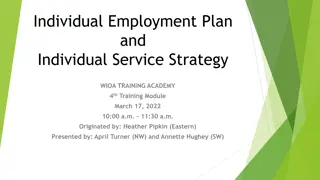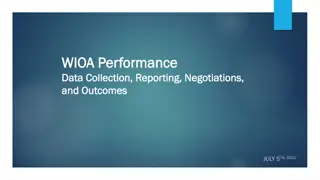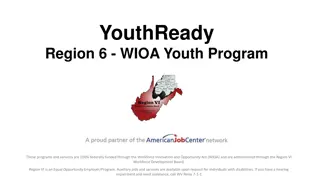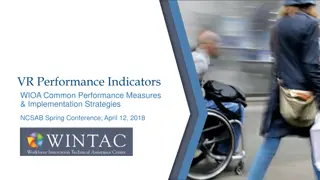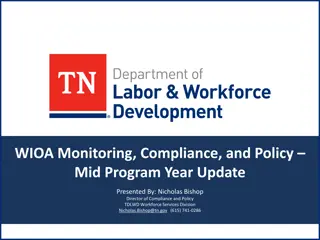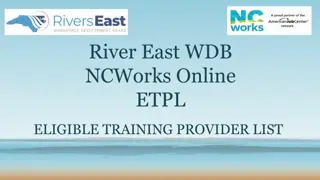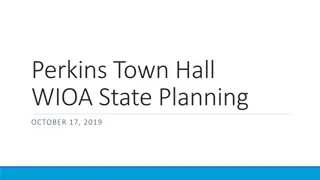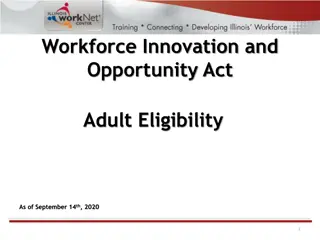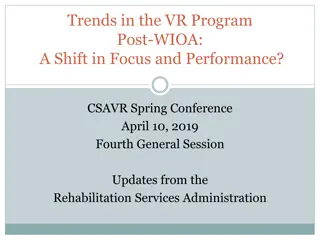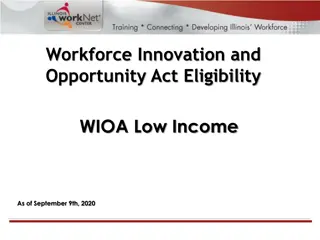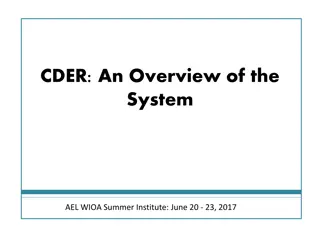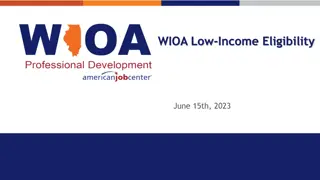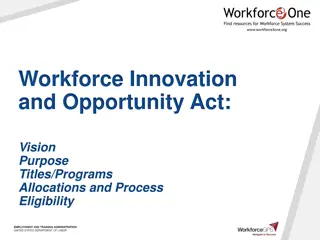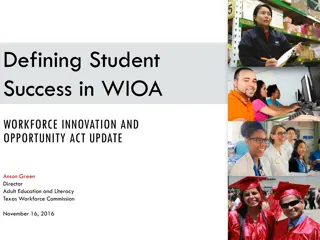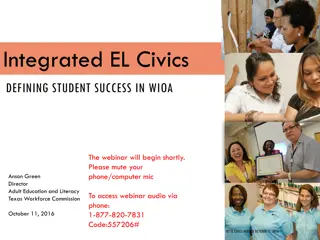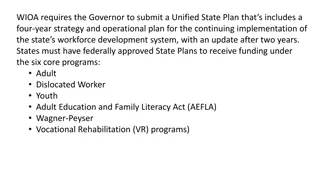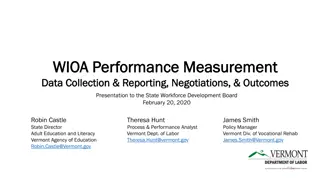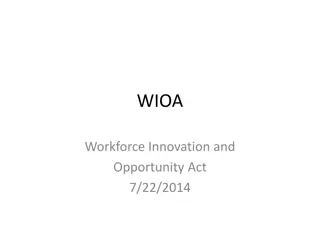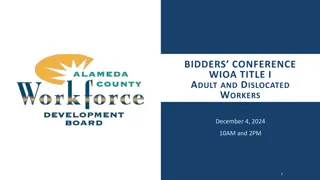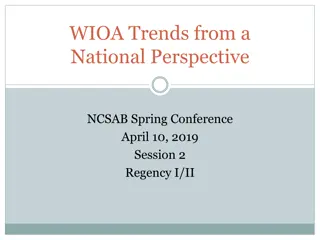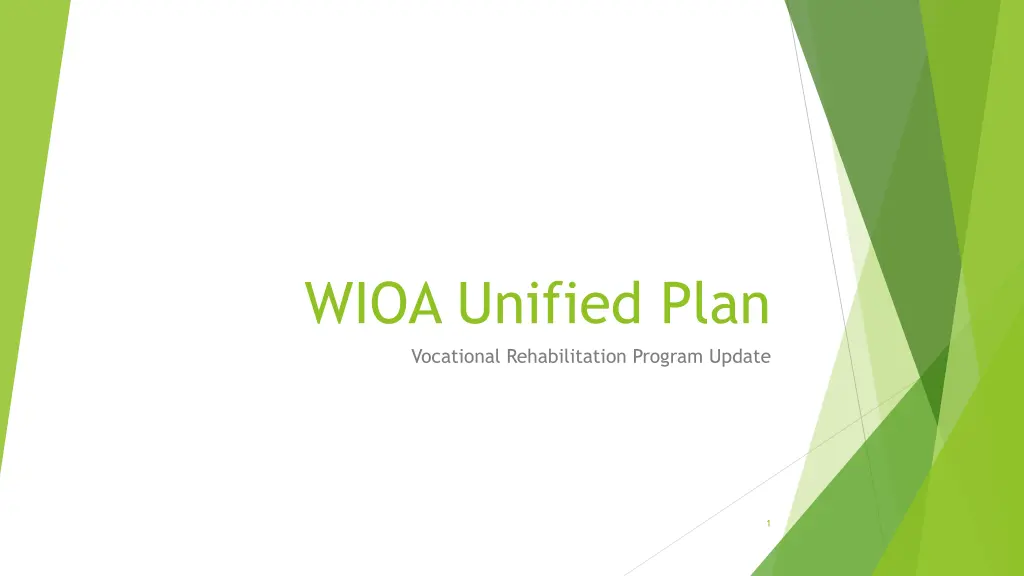
Vocational Rehabilitation Program Updates under WIOA Unified Plan
Learn about the Vocational Rehabilitation Program updates under the WIOA Unified Plan, including key components such as state plans, partner requirements, and the role of the State Rehabilitation Council in goal setting and development.
Download Presentation

Please find below an Image/Link to download the presentation.
The content on the website is provided AS IS for your information and personal use only. It may not be sold, licensed, or shared on other websites without obtaining consent from the author. If you encounter any issues during the download, it is possible that the publisher has removed the file from their server.
You are allowed to download the files provided on this website for personal or commercial use, subject to the condition that they are used lawfully. All files are the property of their respective owners.
The content on the website is provided AS IS for your information and personal use only. It may not be sold, licensed, or shared on other websites without obtaining consent from the author.
E N D
Presentation Transcript
WIOA Unified Plan Vocational Rehabilitation Program Update 1
Overview WIOA requires a unified state plan including the required partners VDOL, VR and AOE. WIOA also requires specific updates for the core programs: Title I adult, Dislocated Worker, and Youth Programs Title III Wagner-Peyser Title II Adult Ed VR section VR section includes two separate plans, one for the Division of Vocational Rehabilitation and one for the Division of the Blind and Visually Impaired 2
Vocational Rehabilitation Plan Components VR Plan describes how DVR will meet the requirements of the Rehabilitation Act as Amended under WIOA. For example: The DVR plan for having qualified staff Our agreements with required partners (e.g. Dept of Mental Health, AOE, Developmental Services, and Dept of VT Health Access How we will meet the requirement to serve individuals with the most severe disabilities first (Order of Selection). Estimates of numbers served Plans for supported employment services 3
Vocational Rehabilitation Plan Components (Cont:) The VR Plan contains basic assurances about our program including: DVR will serve individuals statewide DVR will operate as the designated state unit to administer the Basic VR program DVR will create a State Rehabilitation Council (SRC) to advise the agency around administration of the program DVR will conduct a Needs Assessment every three years DVR will implement Pre-Employment Transition services for high school students with disabilities It is basically the state contract with the federal Government 4
Role of the State Rehabilitation Council in Developing the VR State Plan The State Rehabilitation Council (SRC) is the federally required advisory board for the DVR program. The primary responsibilities of the SRC are to: Assist DVR implement a Needs Assessment every three years to inform the State Plan Assist DVR develop the VR Section of the State Plan In addition the SRC has it s own section in the VR State Plan 5
Goals and Priorities This is probably the most important part of the plan because it sets out DVR s goals for the next two years DVR must develop the goals in partnership with the SRC (the DVR public advisory board) The goals must be based on the Needs Assessment Vermont DVR and the SRC look to set meaningful and aspirational goals As much as possible we try to make the goals measurable with clear and understandable outcome targets 6
VR Goals and Priorities Goal 1: DVR will align services to support consumers in achieving the WIOA Common Performance Outcomes Measures Goal 2: DVR will increase the percentage of consumer earnings over 110% of minimum wage and 150% of minimum wage at closure Goal 3: DVR will increase consumer opportunities to participate in and gain industry- recognized credentials in middle skills professions. This will include sector-based training programs in collaboration with the Career and Technical Education Centers and Community College of Vermont. Goal 4: DVR will continue to expand efforts to effectively serve employers through Creative Workforce Solutions (CWS). 7
VR Goals and Priorities Goal 5: Consumer satisfaction with DVR services will be maintained or increase Goal 6: DVR will implement a comprehensive quality assurance process incorporating the new AWARE case management system Goal 7: In FFY 2016 and FFY 2017 DVR experienced significant reductions in re-allotment funding. This has resulted in substantial cuts in services and capacity. Therefore, DVR will implement strategies to mitigate the loss of resources Goal 8: DVR will continue to implement highly effective Pre-Employment Transition Services (Pre-ETS) for high school students statewide Goal 9: With the implementation of Pre-ETS, the DVR caseload has trended towards serving a younger cohort. DVR needs to ensure the needs of middle-aged and mature workers are still adequately served 8
VR Goals and Priorities Goal 10: DVR will continue to seek options for supported employment for the following underserved populations in the state Goal 11: DVR will improve the outcomes for students and youth with emotional/behavioral disabilities served through the JOBS Supported Employment Programs 9
For more information Contact James Smith at james.smith@Vermont.gov or at 802 241-0320 10

